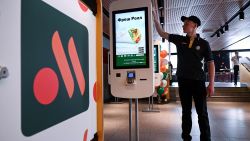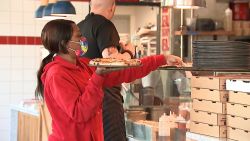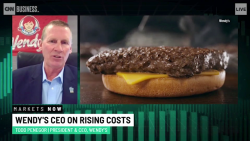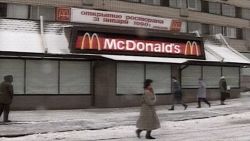Over the past few months, Americans have seen prices increasing in the grocery store.
The prices of food items eaten at home rose 1% in May, largely because meat is getting more expensive. Meat prices have been soaring as major processing plants temporarily closed their doors because workers fell ill with Covid-19.
At the same time, though, some items got cheaper last month. Here’s a quick guide to what people were paying last month.

What got more expensive
For cereal fans, breakfast was more expensive in May: breakfast cereal prices went up 1.4%.
Lunch and dinner was likely more expensive, too.
Beef and veal prices rose 10.8%. The price increase for certain types of meat was even more dramatic: uncooked beef roasts soared 19.5%, and uncooked beef steak prices jumped 11.6%. Pork chops prices went up 8.4%. Fresh whole chickens cost 2% more. Rice, pasta and cornmeal prices rose 1.8%. Salt and other seasoning and spices went up 1%.
Vegetables, too, got more expensive.
Consumers paid 1.1% more for potatoes, 1.9% more for tomatoes and 1% more for frozen vegetables. Looking for a break with legumes? You won’t find it: Dried beans, peas and lentils went up 4.9%.
And dessert wasn’t so cheap last month, either. Ice cream rose 2.5%. Fresh cakes and cupcakes went up 1.8% and sugar and sugar substitutes cost 1.2% more.
What got cheaper
There were some bright spots for shoppers, especially people seeking a heartier breakfast than cereal.
Egg prices fell 4.8%. Bread fell 1.8%. Breakfast sausages fell 1.1%.
Roasted coffee fell 1.7%. Citrus fruit prices fell by 1.2%.
Other prices got lower, too — especially for shelf-stable goods.
Soup prices fell 3.3%. Canned vegetables fell 1.2%. Olives, pickles and relishes fell 2.4%.
And for those with a sweet tooth, cookie prices fell 3.1%.
And what didn’t really change
Fresh fish and seafood prices fell 0.1%, as did bacon costs. Lettuce got 0.1% more expensive, as did butter. Milk prices went down 0.4%
And if your head is spinning from how much it costs to stock up your fridge: Food costs away from home went up 0.4%.
























